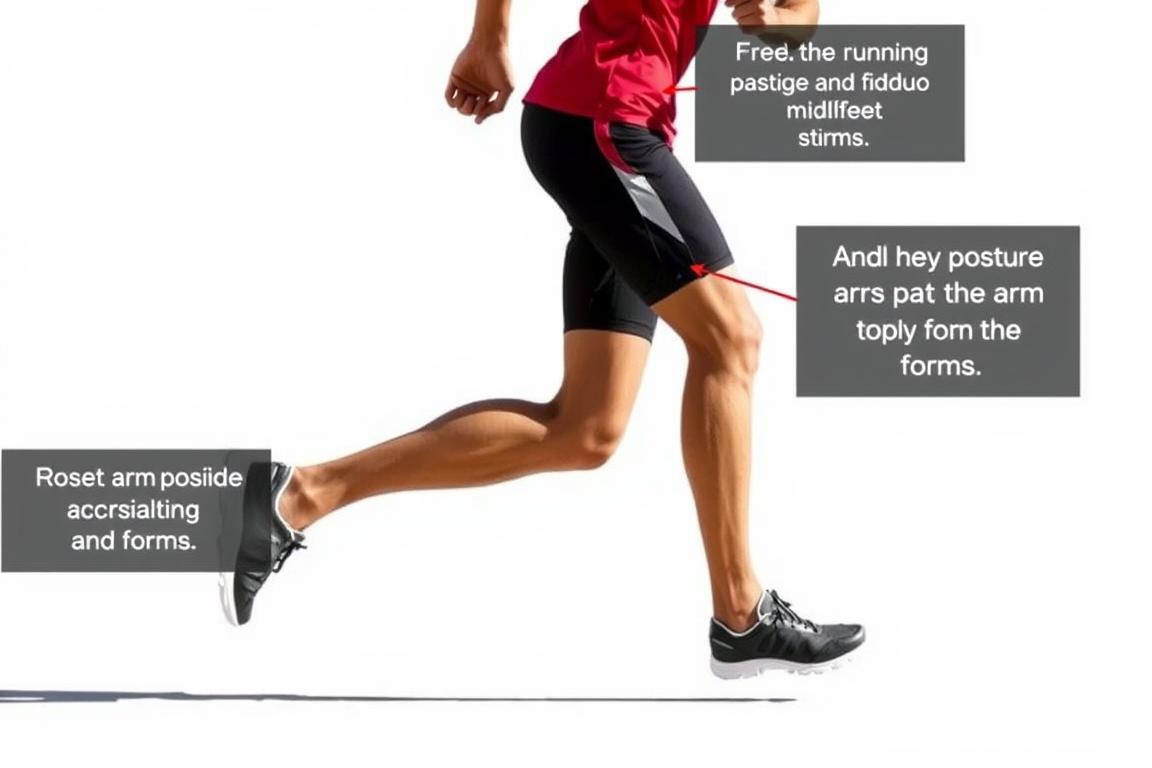A Beginner's Guide to Running for Weight Loss
Thinking about lacing up those running shoes to shed some pounds? You're making a smart choice. Running for weight loss is one of the most effective exercises you can do—burning calories, boosting metabolism, and transforming your body from day one. The best part? You don't need fancy equipment or a gym membership to get started. This guide will walk you through everything you need to know to begin your running journey safely and effectively, even if you've never run before.
Why Running Works for Weight Loss
Running stands out as one of the most effective exercises for weight loss for several compelling reasons. Understanding these benefits can help motivate you as you begin your journey.
Burns Serious Calories
Running burns more calories than most other forms of exercise. A 155-pound person can burn approximately 372 calories during just 30 minutes of moderate running at 6 mph. This calorie-burning effect is significantly higher than walking, swimming, or cycling at a casual pace.
Continues Burning Calories After Your Run
One of running's secret weapons for weight loss is the "afterburn effect," scientifically known as excess post-exercise oxygen consumption (EPOC). Your body continues to burn calories at an elevated rate for hours after you finish running, especially after high-intensity runs like intervals or hill repeats.
Targets Stubborn Belly Fat
Studies have shown that moderate-to-high intensity aerobic exercise like running can reduce belly fat, even without dietary changes. This type of fat, known as visceral fat, is particularly harmful to your health and linked to various diseases.
Suppresses Appetite
Research indicates that high-intensity running can reduce appetite by affecting hunger hormones like ghrelin. This natural appetite suppression can help you maintain a calorie deficit without feeling constantly hungry.
Running is one of the few exercises that can burn calories long after you've finished your workout, making it incredibly efficient for weight loss.
Getting Started: The Basics of Running for Weight Loss
If you're new to running, starting gradually is key to success. Your body needs time to adapt to the new stresses of running, and a slow progression will help prevent injuries and burnout.

Essential Gear
You don't need much to get started with running for weight loss, but a few key items will make your experience more comfortable and effective:
- Good running shoes that provide proper support for your foot type
- Comfortable, moisture-wicking clothing (avoid cotton which holds sweat)
- A water bottle to stay hydrated
- Optional: a running app or fitness tracker to monitor progress
The Walk-Run Method
For beginners, the walk-run method is the most effective way to build endurance without risking injury or burnout. This approach alternates periods of walking and running, gradually increasing the running intervals as your fitness improves.
Pro Tip: Start with more walking than running. As weeks progress, gradually increase your running time while decreasing walking time. This method has helped countless beginners successfully transition to running.
Proper Running Form
Good form helps prevent injuries and makes your running more efficient, allowing you to burn more calories with less effort:
- Keep your head up, shoulders relaxed, and back straight
- Land midfoot, not on your heel or toe
- Maintain a slight forward lean from the ankles, not the waist
- Keep your arms bent at about 90 degrees, swinging from the shoulder
- Take shorter, quicker steps rather than long strides

Your 4-Week Beginner Running Plan for Weight Loss
This progressive plan is designed specifically for beginners looking to lose weight through running. It gradually builds your endurance while allowing adequate recovery time between sessions.
Always warm up with 5 minutes of brisk walking before starting your intervals and cool down with 5 minutes of easy walking afterward.
| Week | Workout Structure | Frequency | Total Time |
| Week 1 | 1 min run, 2 min walk x 7 rounds | 3-4 days/week | 30 min (including warm-up/cool-down) |
| Week 2 | 2 min run, 2 min walk x 5 rounds | 3-4 days/week | 30 min (including warm-up/cool-down) |
| Week 3 | 3 min run, 2 min walk x 4 rounds | 3-4 days/week | 30 min (including warm-up/cool-down) |
| Week 4 | 4 min run, 2 min walk x 3 rounds | 3-4 days/week | 30 min (including warm-up/cool-down) |

Tips for Success
- Run at a conversational pace—you should be able to speak in complete sentences
- Rest at least one day between running days to allow your body to recover
- If a week feels too challenging, repeat it before moving to the next
- Focus on consistency rather than speed or distance
Nutrition: Fueling Your Running for Maximum Weight Loss
What you eat plays a crucial role in your weight loss success. Running creates a calorie deficit, but proper nutrition optimizes this effect and provides the energy you need for effective workouts.

Pre-Run Nutrition
What you eat before running can significantly impact your performance and calorie burn:
If Running Within 1 Hour:
- Small banana
- Half a slice of toast with honey
- Small handful of dried fruit
If Running in 2-3 Hours:
- Oatmeal with berries
- Whole grain toast with avocado
- Greek yogurt with fruit and granola
Post-Run Recovery
Eating within 30-45 minutes after your run helps repair muscles and replenish energy stores:
- Protein smoothie with fruit
- Greek yogurt with berries and a drizzle of honey
- Turkey and vegetable wrap
- Eggs with vegetables and whole grain toast
Don't fall into the trap of rewarding yourself with high-calorie foods after running. This common mistake can easily erase the calorie deficit you worked hard to create.
Hydration for Runners
Proper hydration is essential for optimal performance and weight loss:
- Drink 16-20 oz of water 2-3 hours before running
- Sip 7-10 oz of water every 10-20 minutes during your run
- After running, drink 16-24 oz of water for every pound lost during exercise

Tracking Your Progress
Monitoring your progress helps maintain motivation and allows you to make adjustments to your running and nutrition plan as needed.

Effective Tracking Methods
Running Apps
Apps like Strava, Nike Run Club, and MapMyRun track distance, pace, calories burned, and can even provide training plans.
Fitness Trackers
Devices from Garmin, Fitbit, or Apple Watch provide detailed metrics on your runs and overall daily activity.
Running Journal
A simple notebook to record your runs, how you felt, and any observations helps identify patterns and progress.
What to Track
- Running metrics: Distance, time, pace, perceived effort
- Physical measurements: Weight, body measurements (weekly, not daily)
- Subjective measures: Energy levels, mood, sleep quality
- Non-scale victories: Clothing fit, endurance improvements, reduced recovery time
Remember: Weight loss isn't always linear. Focus on the overall trend rather than day-to-day fluctuations, and celebrate all forms of progress, not just what you see on the scale.
Debunking Common Running Myths
Many beginners hesitate to start running because of persistent myths. Let's address these concerns with evidence-based information.

Myth: "Running ruins your knees"
Contrary to popular belief, research shows that running can actually strengthen your knees. A study published in Medicine & Science in Sports & Exercise analyzed 28 studies and found strong evidence linking physical activity with stronger knee tissue and healthier knees. Another study of older runners found that those who ran more actually reported less knee pain.
The key is proper form, appropriate footwear, and gradual progression. Starting with the walk-run method allows your joints to adapt gradually to the impact of running.
Myth: "You have to run fast to lose weight"
Running at a moderate, conversational pace is highly effective for weight loss, especially for beginners. While high-intensity running burns more calories per minute, slower running allows you to run longer and more frequently, often resulting in greater total calorie burn and less risk of injury or burnout.
As your fitness improves, you can gradually incorporate faster segments, but never feel pressured to run at speeds that feel uncomfortable.
Myth: "You need to run every day to lose weight"
Running 3-4 times per week is optimal for beginners. Your body needs recovery days to repair muscles and strengthen bones. Overtraining can lead to injuries, fatigue, and even weight loss plateaus due to increased stress hormones.
On non-running days, light activities like walking, yoga, or strength training complement your running program and support overall weight loss.
Myth: "Running on an empty stomach burns more fat"
While fasted running may slightly increase fat oxidation during the run, research shows it doesn't significantly impact overall weight loss. More importantly, running without fuel often leads to shorter, less effective workouts and can increase muscle breakdown.
For most beginners, a small pre-run snack provides the energy needed for a quality workout that burns more total calories.
Staying Motivated on Your Running Journey
Motivation will naturally fluctuate throughout your running journey. Having strategies to stay consistent, especially when enthusiasm wanes, is crucial for long-term success.

Proven Motivation Strategies
Set Meaningful Goals
Create both process goals (run 3 times this week) and outcome goals (complete a 5K). Celebrate achieving each milestone to build momentum.
Find Your Community
Join a local running group, find an online community, or recruit a friend. Social support significantly increases adherence to exercise programs.
Mix Up Your Routine
Vary your routes, try trail running, or incorporate different types of workouts to prevent boredom and continue challenging your body.
Overcoming Common Challenges
When You Don't See Results
Weight loss plateaus are normal. Focus on non-scale victories like improved endurance, better sleep, or increased energy. Consider taking progress photos or measurements beyond weight.
When Time Is Limited
Even short runs of 15-20 minutes provide benefits. Schedule your runs like any other important appointment, and consider early morning runs before the day gets busy.
When Weather Is Bad
Have a backup indoor workout ready, invest in appropriate gear for different weather conditions, or use the treadmill as an alternative when necessary.
When Motivation Wanes
Remember your "why"—the deeper reason you started running. Visualize how you'll feel after completing your run, not just during the challenging parts.

The difference between a runner and a non-runner isn't ability—it's consistency. Even the slowest run is better than the workout you skip entirely.
Your Running for Weight Loss Journey Starts Now
Running for weight loss is a journey that offers rewards far beyond the numbers on a scale. As you progress, you'll discover increased energy, improved mood, better sleep, and a sense of accomplishment that spills over into other areas of your life.
Remember that every runner started somewhere. The elite marathoners, the casual joggers, and everyone in between all took that first step. Your journey begins with lacing up your shoes and heading out the door—even if you're walking more than running at first.

The plan outlined in this guide provides a sustainable approach to running for weight loss that minimizes injury risk while maximizing results. By combining consistent running with proper nutrition and recovery, you're setting yourself up for success.
🏃♂️ Conclusion :
Running for fat loss is one of the simplest yet most powerful tools you can use on your journey to a healthier lifestyle. You don’t need fancy gear or a complicated plan to get started — just commitment, patience, and the desire to change. Over time, you won’t just notice fat loss, but also improvements in your energy levels, mental well-being, and self-confidence. Make running an enjoyable habit, start with small steps, and remember: big results often come from humble beginnings.








Hi Pleas. Do not Spam in Comments